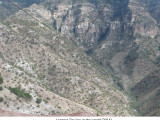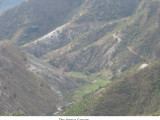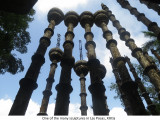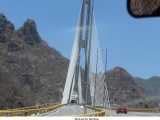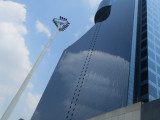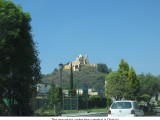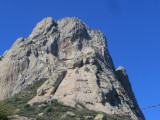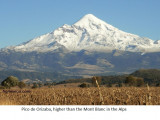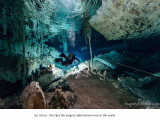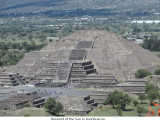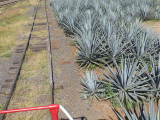Mexico, the great unknown

Mexico is well known for its beaches, numerous and beautiful. But wait a bit. Its coastline is 11,122 km notably with the Pacific ocean and the gulf of California (also known as the sea of Cortez) which account for 7,828 km on its western side and the Carabean sea and the gulf of Mexico which occupy only 3,294 km on its eastern side.
The total surface area of Mexico is 1,964 375 square km including 5,142 square km in islands. If we take 10 km inland for all coastline (and for those of you that have been in Acapulco, you know that I’m generous) the beaches of Mexico represent 11,122 * 10 = 112,220 square km which represents less than 6% of its total area.
The rest?
The rest are mountains and a plateau.
The mountains, Sierra Madre oriental and occidental go from the frontier with the United States right up to the neovolcanic cordillera which crosses Mexico from Colima to Veracruz. This cordillera cuts Mexico in half. But the sierras continue further south.
Between the two sierras, you find the plateau that reaches between 1,100 to 3,300 meters in altitude. The city of Mexico sits at a height of around 2,200 meters which explains a climate that is never too hot or too cold. In fact, a perfect climate.
The Yucatan peninsula, which houses Chichen Itza, Tullum, Cancun, Playa del Carmen and other sand areas, features little or no mountains.
In order to compare altitudes, the Mont Blanc, the highest peak of the Alps is 4,809 meters high whereas the Orizaba peak, in the Veracruz state, rises to 5,636 meters.
There are many more mountains but for the purpose of this article, those mentioned are sufficient.
There are many attractions in this magnificent country but let’s mention only a few:
The three largest pyramids of the world are: Cholula (Mexico) Kheops (Egypt) and the sun pyramid of Theotihuacan (Mexico) The Barranca del Cobre (Copper Canyon) is four times larger than the Grand Canyon. The Urique canyon is 1,879 meters deep whereas the Grand Canyon is 1,857 meters deep.
The largest revolving restaurant in the world is the Bellini, on the top of Mexico city’s world Trade center.
The Baluarte bridge is a cable stayed bridge with the highest deck height and is the second highest bridge in the world after China’s Siduhe bridge (Durango – Sinaloa)
Pena de Bernal is the third largest monolith in the world but is the highest (altitude). (Queretaro). Xilitla, the only super realist site in the world with over 200 structures (San Luis Potosi). The longest zipline in the world was, in July 2014, in Posada Barranca. To get there, you could take El Chepe, one of the 10 most beautiful train rides in the world. Mexico is in 15th position for its gross domestic product, 9th biggest petroleum producer, and biggest silver producer. The Mexican Consejo Regulador del Tequila (Tequila Regulatory Council) reported 1,377 registered brands from 150 producers for the year 2013. There are over 150 brands of Mezcal. Tequila can only be produced from the blue Agave plant whereas Mezcal can be produced from all Agave plants except the blue Agave. Second largest cave in the world. Between the 82 km of Dos Ojos and the 238 km of Sac Actun, the combination of these two places define the second largest grotto in the world but the number one position for the longest subterranean river in the world. (173 km in Tulum). Much more will be examined in the coming articles.
Videos links :
Baluarte : https://www.youtube.com/watch?v=2Y7vrsg14wo&feature=youtu.be
Pena de Bernal : https://www.youtube.com/watch?v=PRtma3Y0NYo&feature=youtu.be
Tirolesa
Barranca : https://www.youtube.com/watch?v=NJXVMuV2pqY
Las Posas : https://www.youtube.com/watch?v=XdpYYo-PrqM&feature=youtu.be






